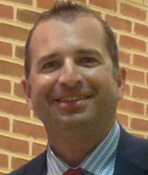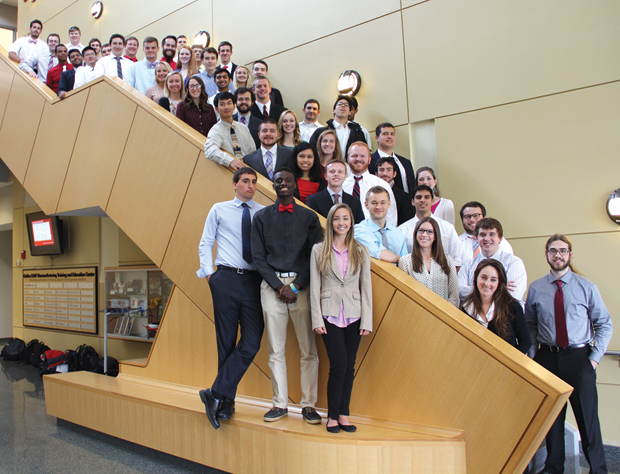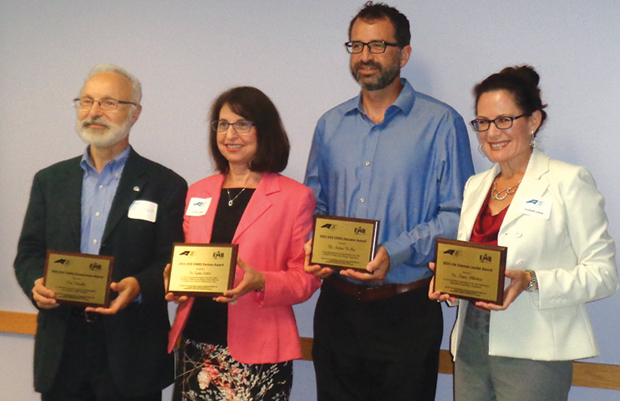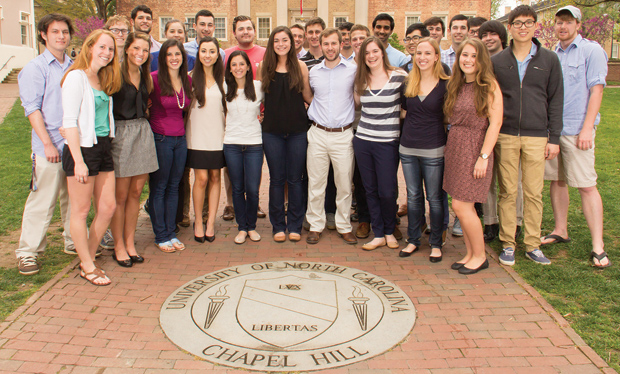Above: The 2015 UNC BME senior design team
It’s not just about a grade,” says senior BME student Sam Ray. “These are real engineering problems.” Ray is one of the 85 seniors who participated in the 2015 BME Design Symposium sponsored by the Joint Department of BME at North Carolina State University (NCSU) and the University of North Carolina (UNC) at Chapel Hill.
In this innovative program, students are organized into teams and shadow doctors and health care professionals in various areas of the hospital to find unmet needs. The team identifies the top need, which is developed into a working prototype product with a business model. Rather than being just an academic exercise, this process reflects how product development works in the real world. In fact, UNC–NCSU student BME teams have gone on to start companies that market products based on their team exercise.
How It Started

The BME Design Symposium got its start as a senior design course at NCSU in Raleigh around 2000. Three years later, the Joint Department of BME was formed when the BME graduate courses at UNC and the undergraduate courses at NCSU were combined into a single department. In 2006, Associate Professor of the Practice Andrew DiMeo (pictured right) took over leadership of the program and developed the model in use today. The program is “a combination of philosophies, including academic best practices from Stanford Biodesign and the Wallace Coulter Foundation; industry best practices, including the U.S. Food and Drug Administration (FDA) Quality System Regulations; and the requirements for ABET accreditation,” according to DiMeo.
Approximately 500 BME students have participated in the program since 2006, and 2015 marks the ninth year that the BME Design Symposium has been held under DiMeo’s leadership. WakeMed Health and Hospitals led the way as a major health care provider participating in the program, which now includes area providers such as UNC Health Care, Rex Hospital, and Duke Neurosurgery. Other participating organizations include the NCSU School of Veterinary Medicine, Wake County Emergency Medical Services (EMS), Carolina Air Care, and Raleigh Orthopedics.
The Design Process

Each team prepares a project plan to develop a product solution for a health care need identified through working with health care professionals in a clinical setting. The formal process methodology includes periodic design reviews to assess progress. Feedback is provided by faculty advisors, industry mentors, and fellow students. Emphasis is placed on such real-world aspects of biomedical product design as market analysis and relevant FDA regulations. Students are encouraged to be creative in presenting their product concepts in a clear and engaging manner.
The year-long curriculum consists of five phases:
- Phase 0, Problem Identification
- Phase 1, Needs Assessment and Ideation
- Phase 2, Design
- Phase 3, Manufacturing
- Phase 4, Qualification.
Phases 0 and 1 are taught in the fall semester, and Phases 2–4 are taught in the spring.
In Phase 0, students must develop a strategic focus, perform a stakeholder analysis, and create a need statement, all of which are reviewed as part of the Phase 0 design review. In Phase 1, a project schedule, product requirements, and a competitive landscape are developed and reviewed. Phase 2 involves a manufacturing plan and feasibility assessment and begins to include user feedback. Phase 3 includes quality control, assessment of product risks, and disclosure of intellectual property. Phase 4 introduces students to the regulatory aspects of medical devices, such as FDA approval. And, finally, students present the results of their projects, using demos and poster sessions, at the annual symposium held at the North Carolina Biotechnology Center in Research Triangle Park. The 2015 symposium was held on 28 April. Attendees were given “virtual investment dollars” to distribute to the teams that they felt had the most promising solutions.
Success Stories
The program boasts a number of success stories, where students have gone on to form companies to develop and market products based on their senior design symposium projects. One of these is Augment Medical, a start-up focused on delivering a market- ready platform of devices that gives persons with disabilities the ability to alert a clinician or family member. Augment Medical began as a project called “PatientLink” in the 2011 design symposium, which, in turn, was an extension of a 2008 project that provides spinal injury patients with the ability to use voice-activated technology to summon nurses, turn lights on and off, and change television channels. Both the 2008 and 2011 teams worked with clinicians at WakeMed Health to develop their need statement. Tim Martin, a member of the PatientLink project team in 2011, used his experience to found Augment Medical while a graduate student at NCSU.
The most important takeaway from participation in the senior design symposium, according to Martin, is “to believe in the process. When talking to stakeholders, it is easy and seductive to take each of the problems from an interview and immediately start developing solutions. If you dig deeper and discover the true need by developing a need statement, then you can develop a product that solves a real problem.” The engineering design process learned as part of the program, Martin adds, “is incredibly detailed and fulfilling and drove me to continuing my education into graduate school and, subsequently, enrolling in the design course, where we founded Augment Medical.”
Another success story is Novocor Medical Solutions, a company founded in 2013 that developed an innovative rapid chilling device used by EMS first responders to cool saline during the infusion process to induce therapeutic hypothermia. The idea behind Novocor came from a senior design team in 2008, according to founder and Chief Executive Officer Tony Voiers. “These students selected to work with Wake EMS to look for unmet medical needs that they could address, and, as part of this selection, they rode along with Wake EMS medics to observe them as they treated patients,” Voiers recalled.
The students learned that EMS medics need a way to rapidly chill intravenous fluids that is portable and does not require external power. Once they established this as the need, they came up with about 30 ideas to satisfy it. They then proceeded to prototype their most promising ideas and ended up filing a patent application on the current Novocor technology.
Life Sciences Awards Winners

The Eastern North Carolina Chapter of the IEEE Engineering in Medicine and Biology Society (EMBS) is one of the sponsors of the UNC–NCSU BME Design Symposium. On 5 June 2015, the Chapter’s annual awards event, “Winning the Challenges: Life Sciences Awards,” was held. The purpose of the event, which is cosponsored by the North Carolina Biotechnology Center, is to recognize individuals who have made significant contributions in the life sciences and BME. This year’s event focused on the UNC–NCSU BME Design Symposium. The awardees were as follows.
- Dr. Nancy Allbritton, professor and chair of BME and Distinguished Professor of Chemistry, UNC/NCSU, received the 2015 Life Sciences Leader Award for her innovative leadership of the UNC–NCSU Joint Department of BME.
- Dr. Andrew DiMeo, associate professor of the practice, Joint Department of BME, NCSU, received the 2015 IEEE EMBS Educator Award for his development and leadership of the UNC–NCSU BME Design Symposium.
- Dr. Cynthia Sollod, director, Office of Research, Science, and Technology Development Program, North Carolina Biotechnology Center, received the 2015 IEEE EMBS Partner Award for her sponsorship and support of the EMBS Engineering in Medicine and Biology Intellectual Exchange Group at the North Carolina Biotechnology Center.
- Dan Fuccella, founder and president of Applied Technologies, Inc., received the 2015 IEEE EMBS Entrepreneur Award for innovative design in support of global health and BME education. He was one of the industry mentors who participated in the 2015 BME Design Symposium.
The Eastern North Carolina Chapter of the EMBS, under the leadership of Chair Dr. Liyun Yu, looks forward to continuing to work with the UNC–NCSU BME Design Symposium in support of innovative BME education.
For More Information
- UNC–NCSU Joint Department of Biomedical Engineering. [Online].
- Stanford Biodesign. [Online].
- Wallace H. Coulter Foundation. [Online].
- Eastern North Carolina Section EMBS Chapter. [Online].
- North Carolina Biotechnology Center. [Online].
- Augment Medical. [Online].
- Novocor Medical Systems. [Online].



